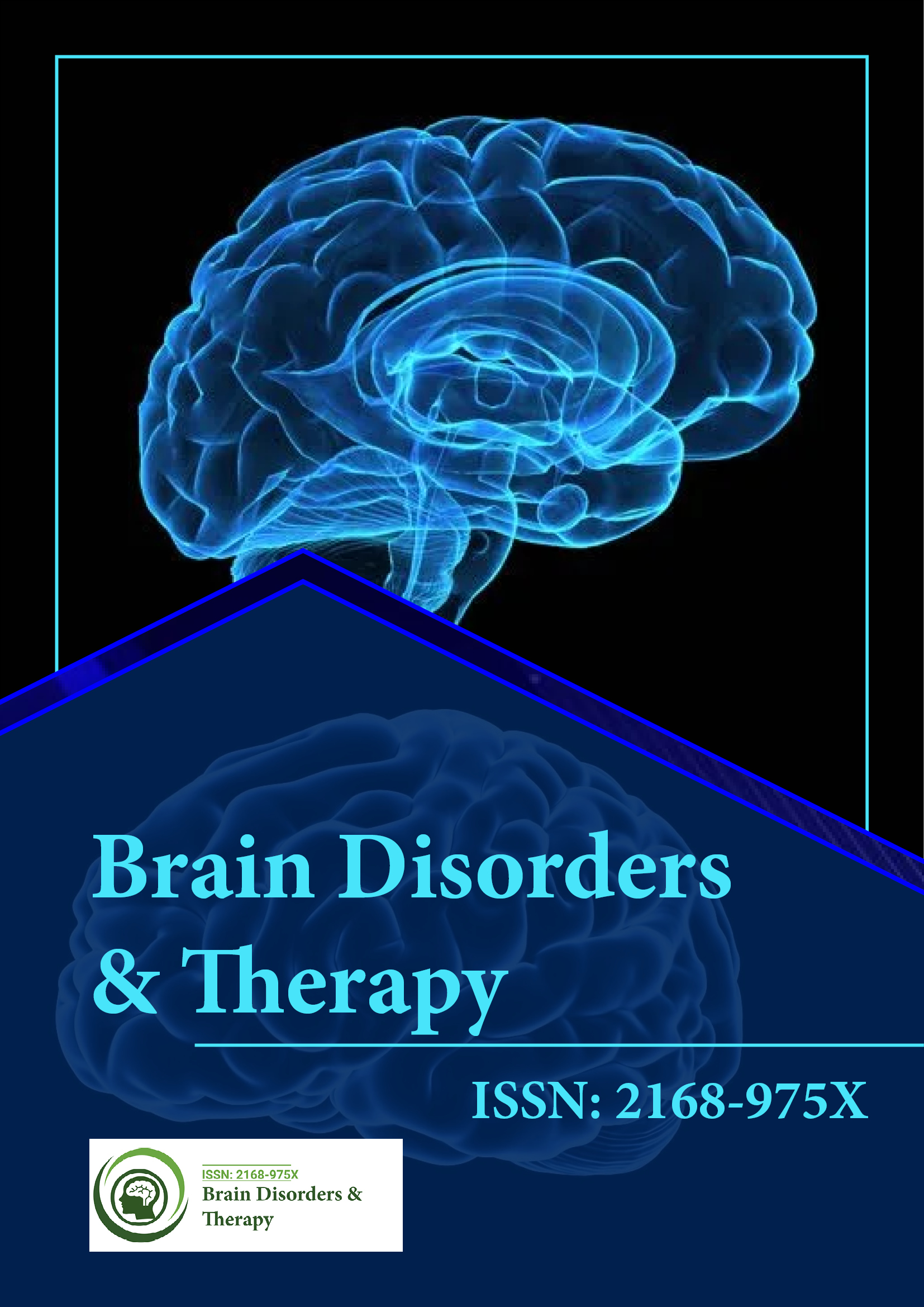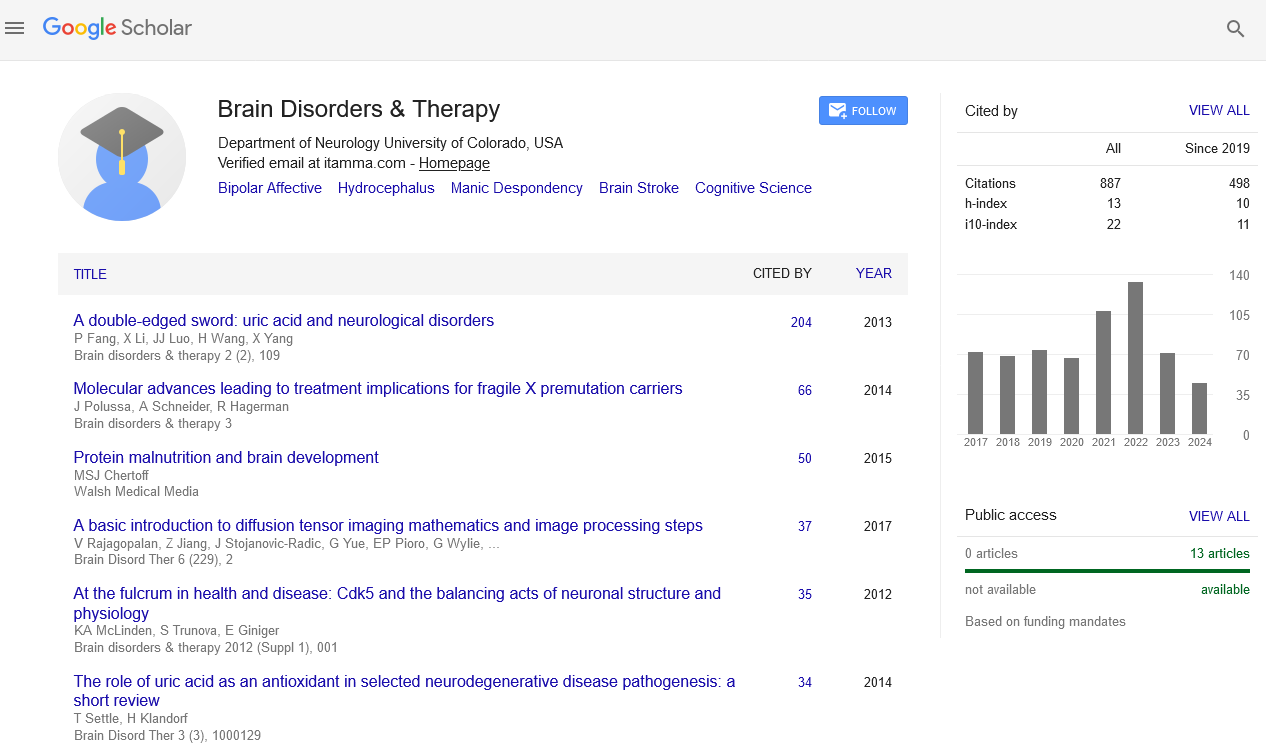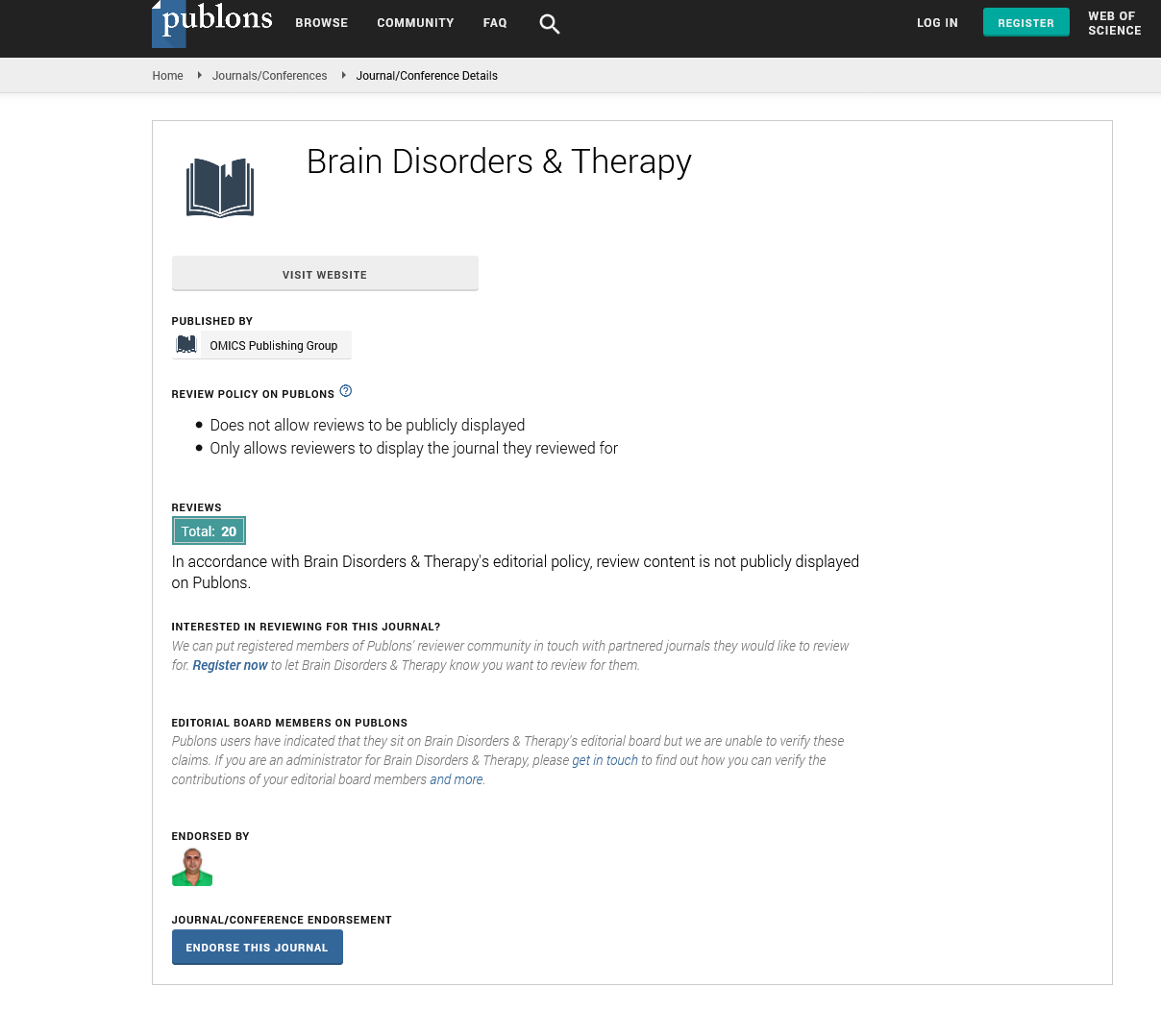PMC/PubMed Indexed Articles
Indexed In
- Open J Gate
- Genamics JournalSeek
- JournalTOCs
- RefSeek
- Hamdard University
- EBSCO A-Z
- OCLC- WorldCat
- Publons
- Geneva Foundation for Medical Education and Research
Useful Links
Share This Page
Journal Flyer

Open Access Journals
- Agri and Aquaculture
- Biochemistry
- Bioinformatics & Systems Biology
- Business & Management
- Chemistry
- Clinical Sciences
- Engineering
- Food & Nutrition
- General Science
- Genetics & Molecular Biology
- Immunology & Microbiology
- Medical Sciences
- Neuroscience & Psychology
- Nursing & Health Care
- Pharmaceutical Sciences
Opinion Article - (2024) Volume 13, Issue 3
The Role of White Matter Damage in Traumatic Brain Injury Outcomes
Daniel Fossi*Received: 26-Aug-2024, Manuscript No. BDT-24-27110; Editor assigned: 29-Aug-2024, Pre QC No. BDT-24-27110(PQ); Reviewed: 12-Sep-2024, QC No. BDT-24-27110; Revised: 19-Sep-2024, Manuscript No. BDT-24-27110(R); Published: 26-Sep-2024, DOI: 10.35248/2168-975X.24.13.271
Description
Traumatic Brain Injury (TBI) is a significant public health concern worldwide, leading to a variety of long-term disabilities and neurological challenges. It occurs when an external force, such as a blow or jolt to the head, disrupts normal brain function. While gray matter (the brain’s nerve cells) is frequently discussed in the context of TBI, white matter is equally, if not more, vulnerable to injury. White matter consists of nerve fibers or axons that are coated with myelin, a fatty substance that helps facilitate the rapid transmission of nerve signals between different regions of the brain. Damage to this critical network can lead to severe cognitive, emotional and physical impairments and understanding how white matter is affected by TBI is essential for addressing the long-term consequences of such injuries.
White matter damage in TBI occurs through a variety of mechanisms, with Diffuse Axonal Injury (DAI) being the most well-known. DAI involves widespread damage to the axons caused by shearing forces during a traumatic event, particularly during high-velocity impacts like car accidents or falls. These shearing forces stretch or tear the long, thin axons that connect different parts of the brain. Unlike focal injuries, which are confined to a specific area of the brain, DAI is spread across multiple brain regions and can affect large areas of white matter.
The impact of white matter damage on brain function is extreme. Axons play a critical role in transmitting information between neurons in the gray matter and in linking different brain regions. When axons are damaged, communication between these areas becomes slower and less efficient, resulting in deficits in memory, attention, problem-solving and other cognitive functions. The damage may also affect motor coordination, leading to physical symptoms such as difficulty walking or balancing.
In addition to immediate axonal injury, TBI often triggers secondary injury processes that can further damage white matter. These secondary processes include inflammation, oxidative stress and disruptions to the brain’s blood supply. After the initial trauma, immune cells are activated and migrate to the injured areas, where they release pro-inflammatory molecules. While this immune response is necessary for clearing debris and initiating repair, it can also have harmful effects by exacerbating tissue damage, particularly in the delicate white matter. This chronic inflammation can lead to further degeneration of axons, worsening the long-term prognosis for TBI patients.
Another key factor in the degeneration of white matter following TBI is oxidative stress. The brain consumes a large amount of oxygen to support its energy demands and the production of energy in neurons and axons generates Reactive Oxygen Species (ROS), which are damaging byproducts of cellular respiration. Under normal conditions, the brain has antioxidant mechanisms in place to neutralize ROS, but after a TBI, these mechanisms can become overwhelmed. The excessive production of ROS can damage cellular structures, including the myelin that insulates axons. As a result, demyelination can occur, slowing down the transmission of nerve signals and contributing to the functional deficits seen in TBI patients.
The long-term effects of white matter damage after TBI are significant. Patients with mild TBI, also known as concussions, often experience subtle but persistent changes in cognitive function. For example, they may have difficulty concentrating, processing information quickly, or remembering new information. These deficits are linked to diffuse damage to white matter tracts, particularly those that connect the frontal lobes with other areas of the brain. The frontal lobes are critical for executive functions, including planning, decision-making and emotional regulation. When white matter in these areas is disrupted, patients may also experience changes in mood, such as increased irritability, depression, or anxiety.
In moderate to severe TBI, the damage to white matter is more extensive and the resulting impairments are correspondingly more severe. These patients may experience significant difficulties with movement, speech and cognitive function. In some cases, white matter damage leads to long-term disabilities that prevent patients from returning to work or performing daily activities independently. Memory loss, attention deficits and impaired judgment are common symptoms that result from the disruption of communication between different brain regions due to white matter injury.
Conclusion
White matter damage and degeneration play a critical role in the long-term consequences of traumatic brain injury. The disruption of axonal pathways impairs communication between brain regions, leading to a wide range of cognitive, emotional and physical deficits. As research continues to shed light on the mechanisms of white matter injury in TBI, new therapeutic strategies may emerge that can help protect and repair this vital brain tissue, improving the quality of life for individuals affected by TBI.
Citation: Fossi D (2024). The Role of White Matter Damage in Traumatic Brain Injury Outcomes. Brain Disord Ther. 14:271.
Copyright: © 2024 Fossi D. This is an open-access article distributed under the terms of the Creative Commons Attribution License, which permits unrestricted use, distribution, and reproduction in any medium, provided the original author and source are credited.


